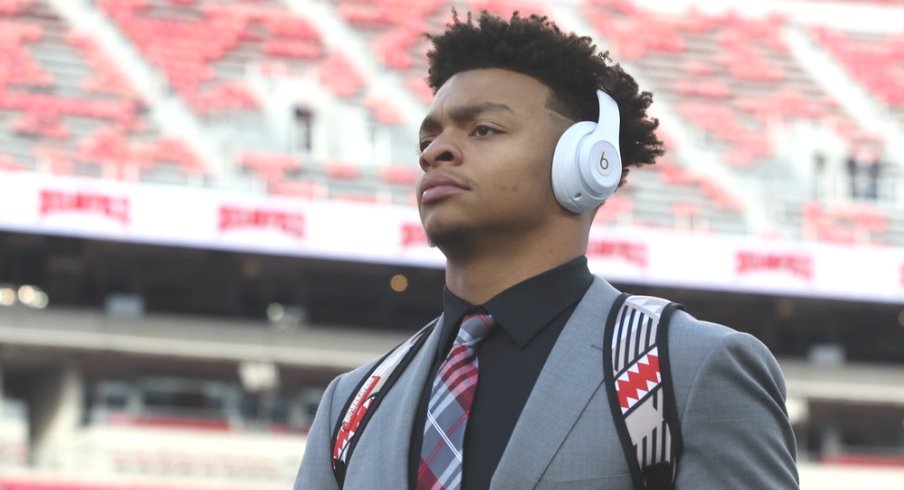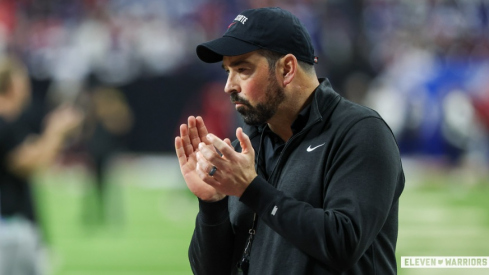A few years ago, I wrote an article about Don Unverferth, Ohio State starting quarterback during the mid 1960's. The somewhat tongue-in-cheek point of the piece was to show that though Unverferth was statistically a pretty bad quarterback, his incredible contributions off the field completely overshadow anything that he did or didn't do on the field.
Welp, consider my ass grass because almost immediately afterwards I got an e-mail from former Columbus mayor Greg Lashutka, a teammate of Unverferth's who played tight end, and he pointed out that guess what, knucklehead: Unverferth was actually a great leader and pretty good quarterback statistically for his time, and that as the game of football has changed over the years, so too have our expectations for what a quarterback should be responsible for on the field.
This interaction made me sweat for a few reasons. First, I really didn't expect to draw heat from a mayor of Columbus during any point of my internet blogging career which has thus far comprised mostly of awkwardly worded puns and photoshopping Jim Harbaugh's head on to movie characters. Maybe a city auditor or something.
And secondly, Lashutka was totally right; I had completely ignored that element in the piece, which was frustrating because the evolution of the quarterback position is one of the most important and fascinating elements of football in general. Don Unverferth and his peers were playing hip-deep in the primordial soup that was the quarterback position in the 50's and 60's. Completing 50% of your passes and throwing for an equal amount of touchdowns and interceptions wasn't the norm, it was actually pretty damn good for a time when three yards and a cloud of dust was a way of life.
Over fifty years of coaching and player development later, and, well...
This past season, Justin Fields threw for almost 3000 yards, completed 67.5% of his passes, and threw 40 touchdowns against just a single interception. He was a Heisman finalist, had one of the best single-season passer ratings in Ohio State history, dominated some tough Big Ten competition, beat Michigan, and did all of this in his first year as a starter.
But I also said all those things about Dwayne Haskins in 2018.
And in 2017 all we could talk about was J.T. Barrett breaking the all-time Big Ten touchdown record set by Drew Brees, which he did by setting a new single-season touchdown mark (breaking one set by himself), which itself has since been eclipsed by... Dwayne Haskins and Justin Fields.
So I'm not sure what constitutes "great" or "good" anymore. 2020 Justin Fields could come out and throw for 3500 yards and 35 touchdowns against five interceptions and that would be nice? Honestly that's a question, because I'm not really sure where the expectations should be set. 3500 passing yards would give Fields the 14th best passing yardage total in Big Ten history, between... wait, Trace McSorley and Mike Kafka? Who even cares?!?
Here's what Bobby Hoying's 1995 season looked like, where he led the Buckeyes to 11 straight wins and then the last two games were probably equally as fun and great but we won't talk about or mention them by name:
| G | Cmp | Att | Pct | Yds | Y/A | AY/A | TD | Int | Rate |
|---|---|---|---|---|---|---|---|---|---|
| 13 | 211 | 341 | 61.9 | 3269 | 9.6 | 9.7 | 29 | 12 | 163.4 |
You could make the argument that was the best passing season in Ohio State history at that point, perhaps matched by Joe Germaine a few seasons later. This is what Troy Smith did en route to winning the Heisman in 2006:
| G | Cmp | Att | Pct | Yds | Y/A | AY/A | TD | Int | Rate |
|---|---|---|---|---|---|---|---|---|---|
| 13 | 203 | 311 | 65.3 | 2542 | 8.2 | 9.2 | 30 | 6 | 161.9 |
Maybe, actually, not quite as good in some ways! Certainly not a step back, but not some great evolutionary leap that you might expect with a decade separating the two players.
11 Years later, with little of the kind of national fanfare that Troy Smith got (remember, the dude won the Heisman with the greatest margin of victory until last night), J.T. Barrett put up similar numbers and it wasn't reason for a season-long celebration of talent, it was a sigh of relief that things had returned to normalcy.
This is what Dwayne Haskins did last season:
| G | Cmp | Att | Pct | Yds | Y/A | AY/A | TD | Int | Rate |
|---|---|---|---|---|---|---|---|---|---|
| 14 | 373 | 533 | 70.0 | 4831 | 9.1 | 10.3 | 50 | 8 | 174.1 |
Of course, none of this is happening in a vacuum. College football is changing incredibly quickly, and the catalyst has been a different approach to coaching and playcalling that has exploded on the scoreboard and made 4500-5000 yard passing seasons no longer the sole domain of teams coached by the Mike Leaches of the world. Quarterbacks at Ohio State are part of that evolution, and part of the reason that Ryan Day is the head coach is because Gene Smith and Urban Meyer recognized this shift.
Ultimately "what's next?" is the question that I'm trying to answer here. Joe Burrow, for his part, has some pretty high hopes:
Joe Burrow on Ohio State quarterback Justin Fields: "Obviously Justin will be back next year, and I think he'll win it next year."
— Dan Hope (@Dan_Hope) December 15, 2019
That might not happen, but if you're asking yourself "Is Troy Smith in 2006 actually the baseline expectation for Ohio State quarterbacks in the next decade?" the answer is unequivocally "yes."
Football will continue to evolve, as will the quarterback position. Who knows? Maybe in another ten years we might see the return of the fullback, or the wildcat formation emerging as something other than a dumb short yardage gimmick. Maybe it'll turn out that Jim Bollman was some kind of idiot savant and we'll recognize his system as simply too advanced for its time. Maybe every team will adopt Tresselball as the only truly morally just offense to run. Or maybe football will be banned and Eleven Warriors will become the best jai alai site on the internet.
What is certain is that in the short term Justin Fields is part of a growing number of Ohio State quarterbacks with the unenviable task of living up to and surpassing some legendary performances that are quickly becoming, relative to what college football will look like in 2020, completely mundane.
That shouldn't ever take away from what Unverferth and Hoying and Germaine and Troy and Pryor and Braxton did; as a certain former mayor reminded me, context matters when thinking about what an accomplishment meant for its time and place. But what context can't do is set expectations for the future, and right now in some ways expectations for Justin Fields in 2020 are higher than they've ever been for anyone that's come before him.


